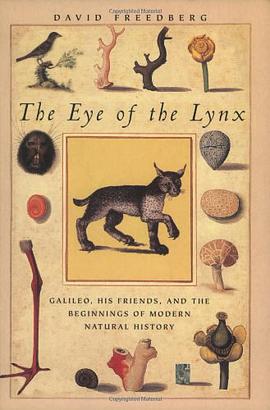The Eye of the Lynx
豆瓣
Galileo, His Friends, and the Beginnings of Modern Natural History
David Freedberg
简介
Some years ago, David Freedberg opened a dusty cupboard at Windsor Castle and discovered hundreds of vividly coloured, masterfully precise drawings of all sorts of plants and animals from the Old and New Worlds. Coming upon thousands more drawings like them across Europe, Freedberg finally traced them all back to a little-known scientific organization from 17th-century Italy called the Academy of Linceans (or Lynxes). Founded by Prince Federico Cesi in 1603, the Linceans took as their task nothing less than the documentation and classification of all of nature in pictorial form. In this first book-length study of the Linceans to appear in English, Freedberg focuses especially on their unprecedented use of drawings based on microscopic observation and other new techniques of visualization. Where previous thinkers had classified objects based mainly on similarities of external appearance, the Linceans instead turned increasingly to sectioning, dissection and observation of internal structures. They applied their new research techniques to an incredible variety of subjects, from the objects in the heavens studied by their most famous (and infamous) member, Galileo Galilei - whom they supported at the most critical moments of his career - to the flora and fauna of Mexico, bees, fossils and the reproduction of plants and fungi. But by demonstrating the inadequacy of surface structures for ordering the world, the Linceans unwittingly planted the seeds for the demise of their own favourite method - visual description - as a mode of scientific classification. Profusely illustrated and engagingly written, "The Eye of the Lynx" uncovers a crucial episode n the development of visual representation and natural history. And perhaps as important, it offers readers a dazzling array of early modern drawings, from magnificently depicted birds and flowers to frogs in amber, monstrously misshapen citrus fruits and more.
contents
Acknowledgments
A Note to Historians of Science
Introduction Saving Appearances
PART I - BACKGROUND
1. The Paper Museum
2. Lynxes
PART II - ASTRONOMY
3. The New Star
4. The Telescope: Imperfection in the Heavens
5. The Conflict of Truths
PART III - NATURAL HISTORY
6. The Chastity of Bees
7. The Microscope and the Vernacular
8. Plants and Reproduction
9. The Mexican Treasury: Taxonomy and Illustration
10. The Doctor’s Dilemmas: Description, Dissection, and the Problem of Illustration
11. Fossils
PART IV - PICTURES AND ORDER
12. The Failure of Pictures
13. The Order of Nature
14. The Fate of Pictures: Appearance, Truth, and Ambiguity
Notes
Abbreviations
Bibliography
Headings
Index